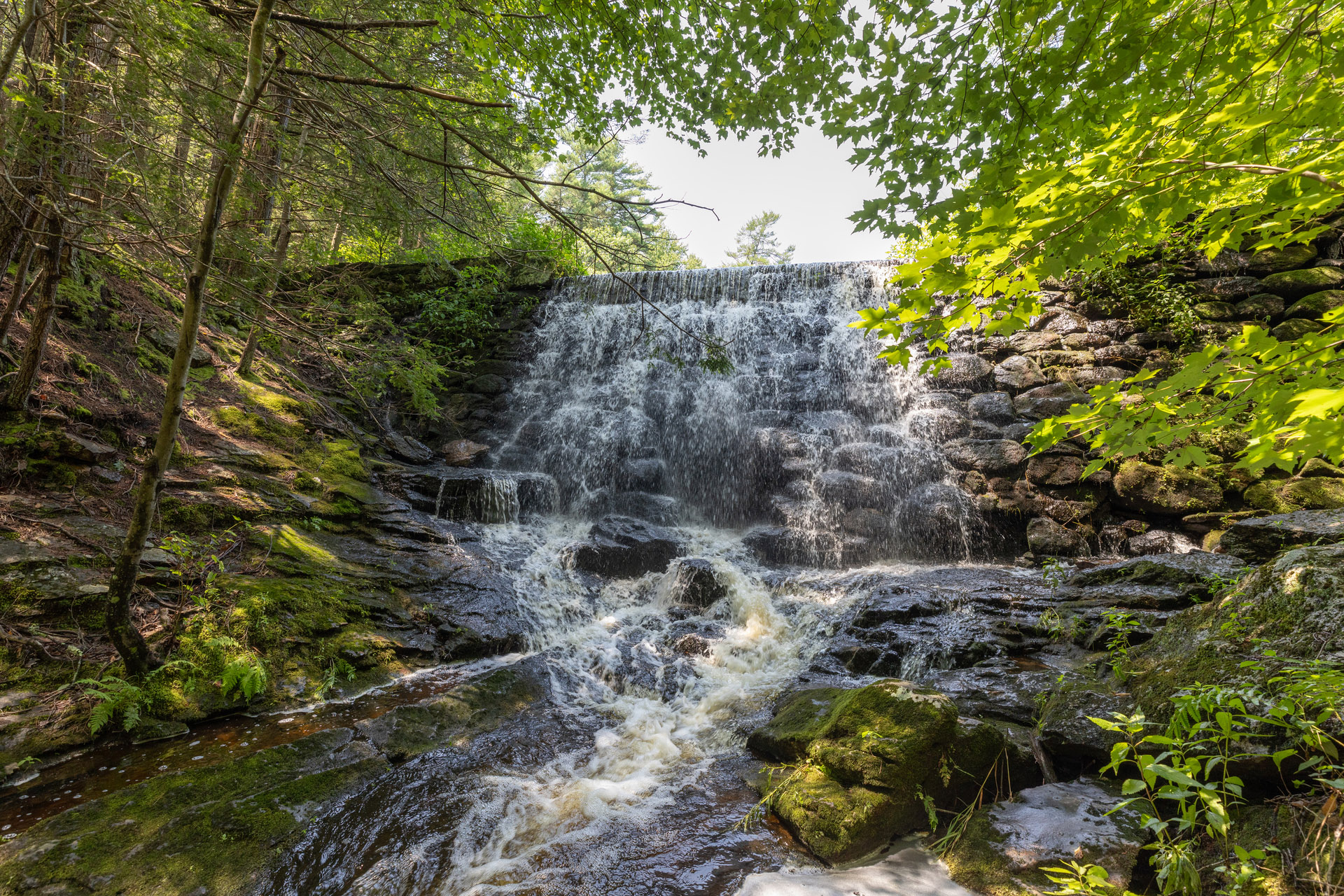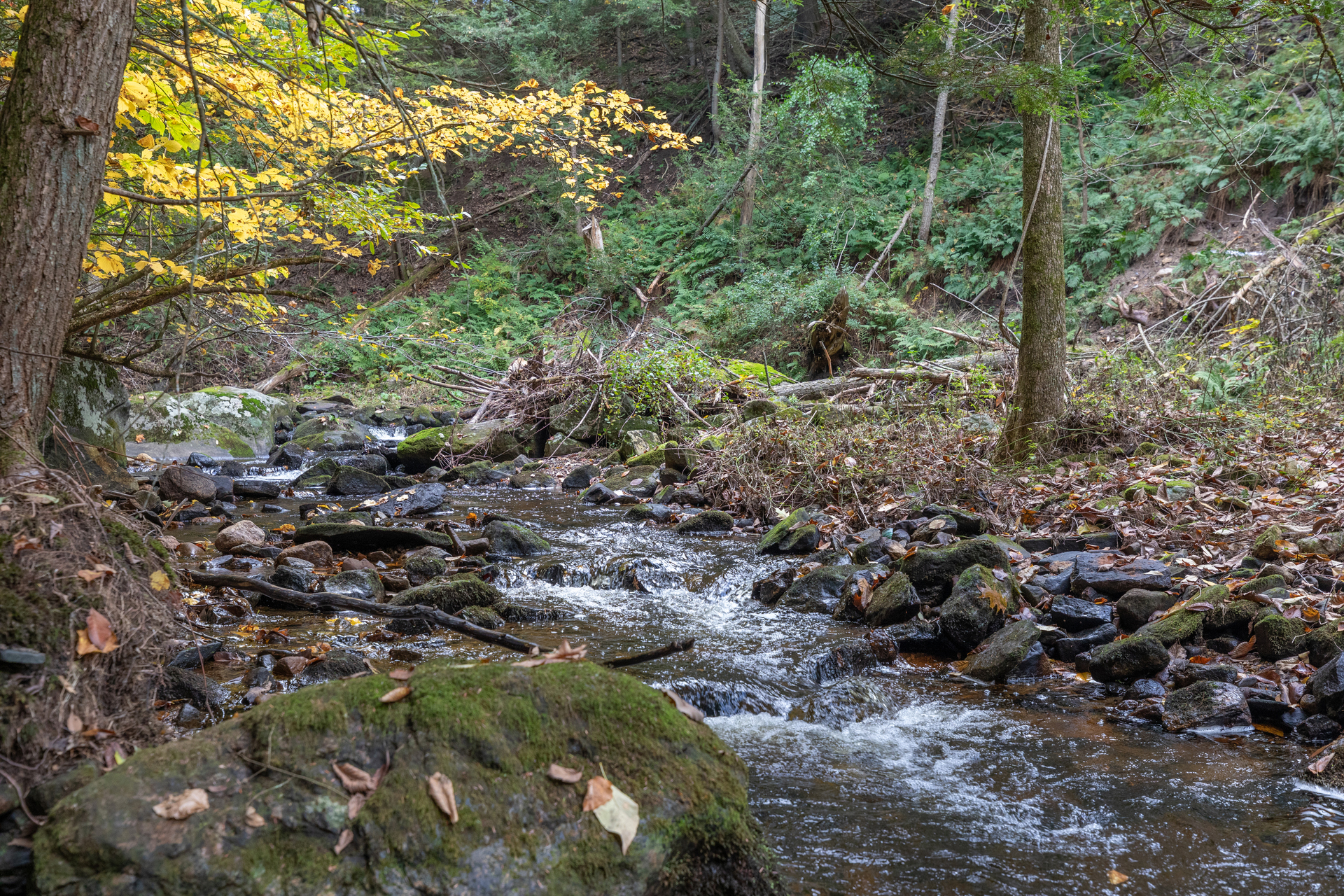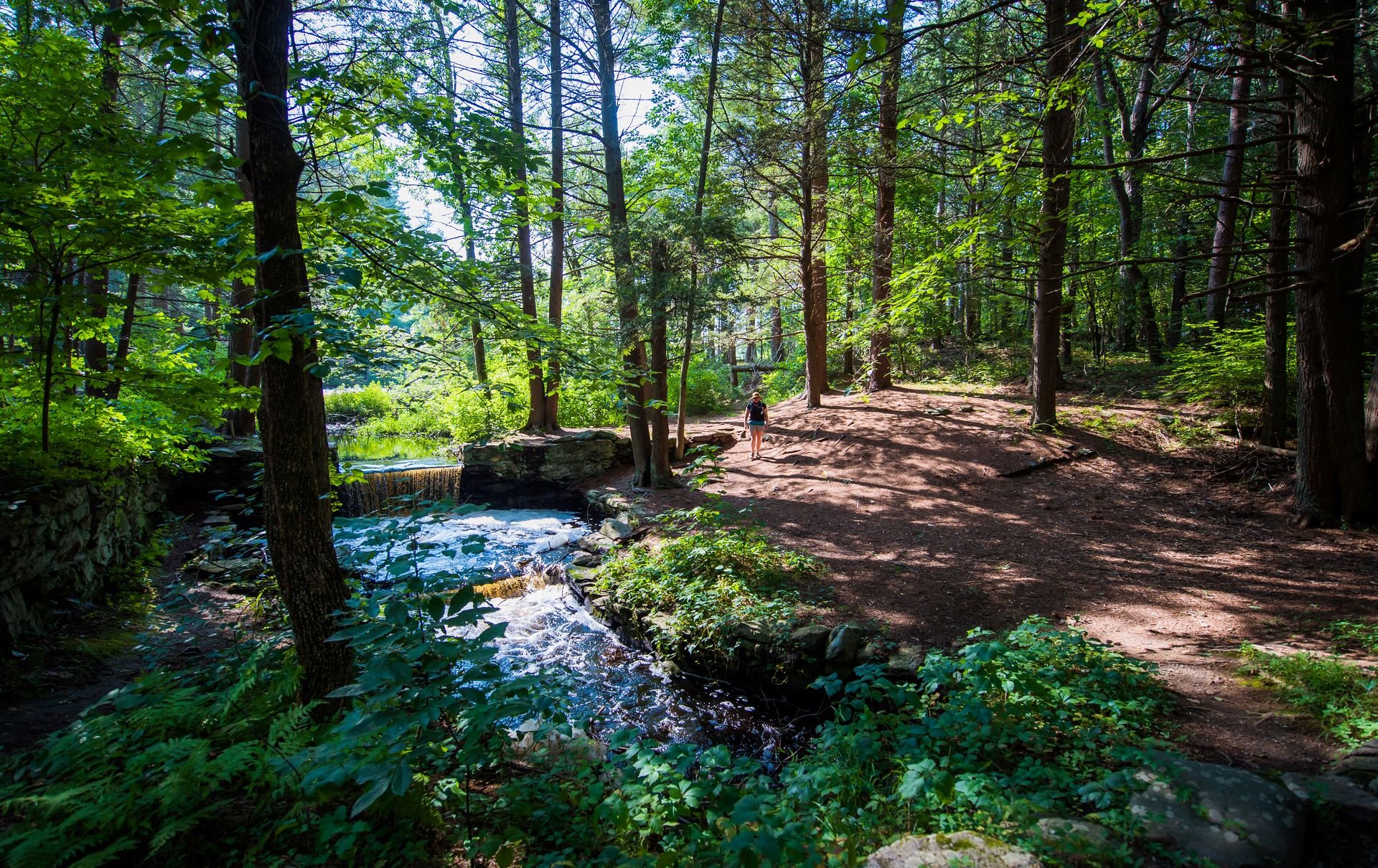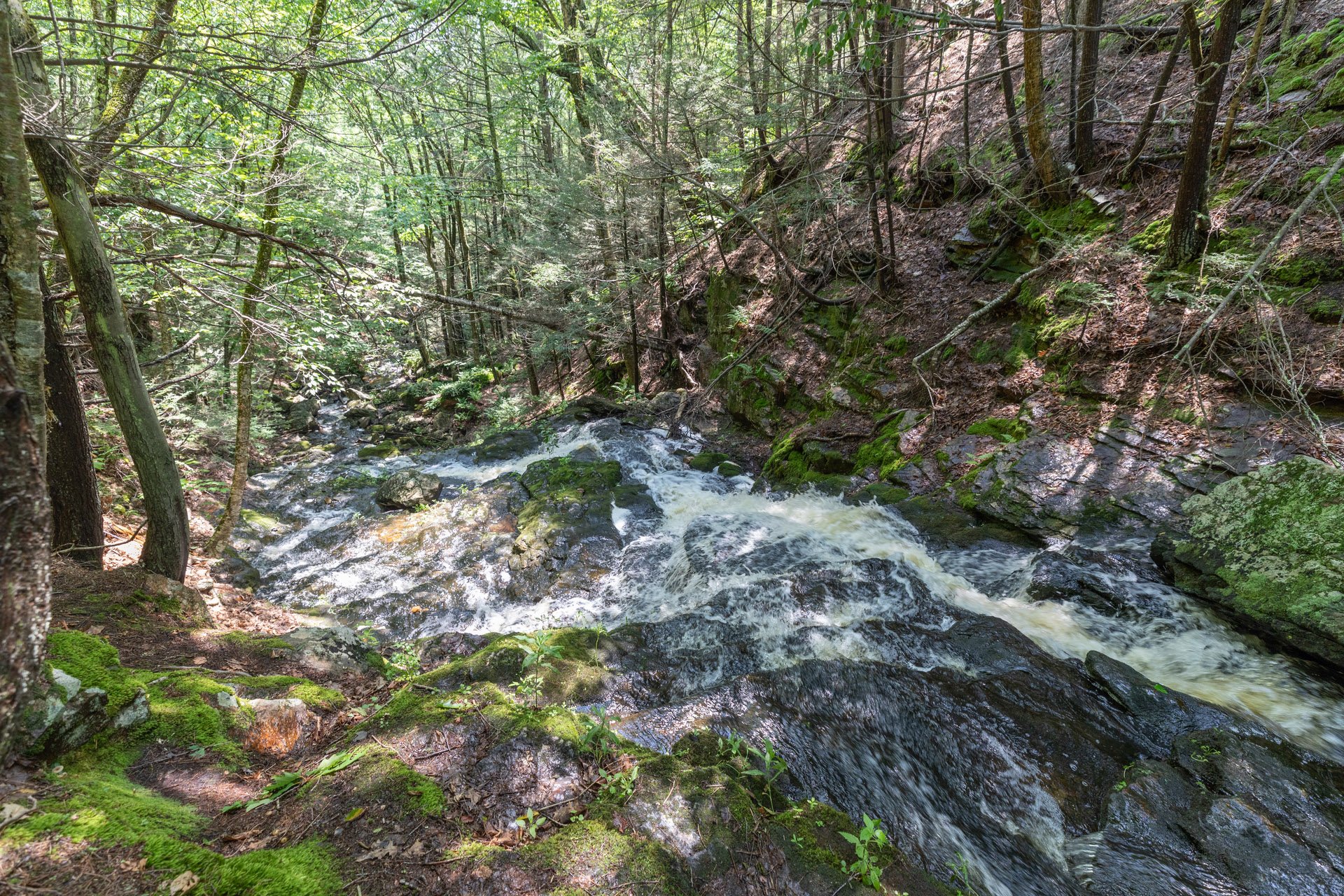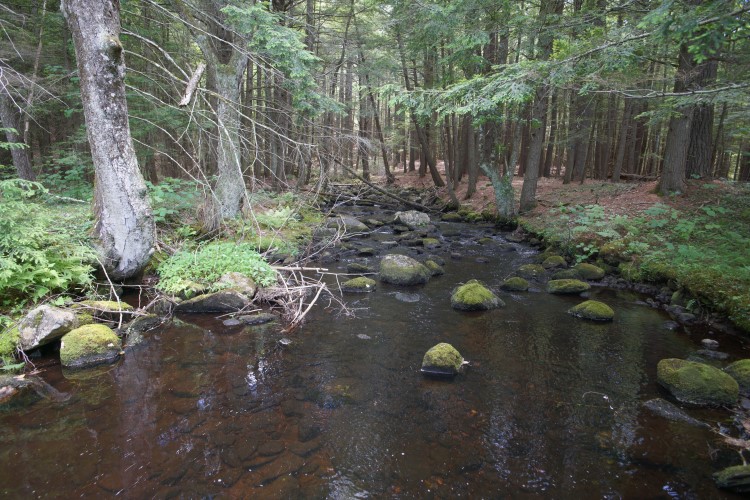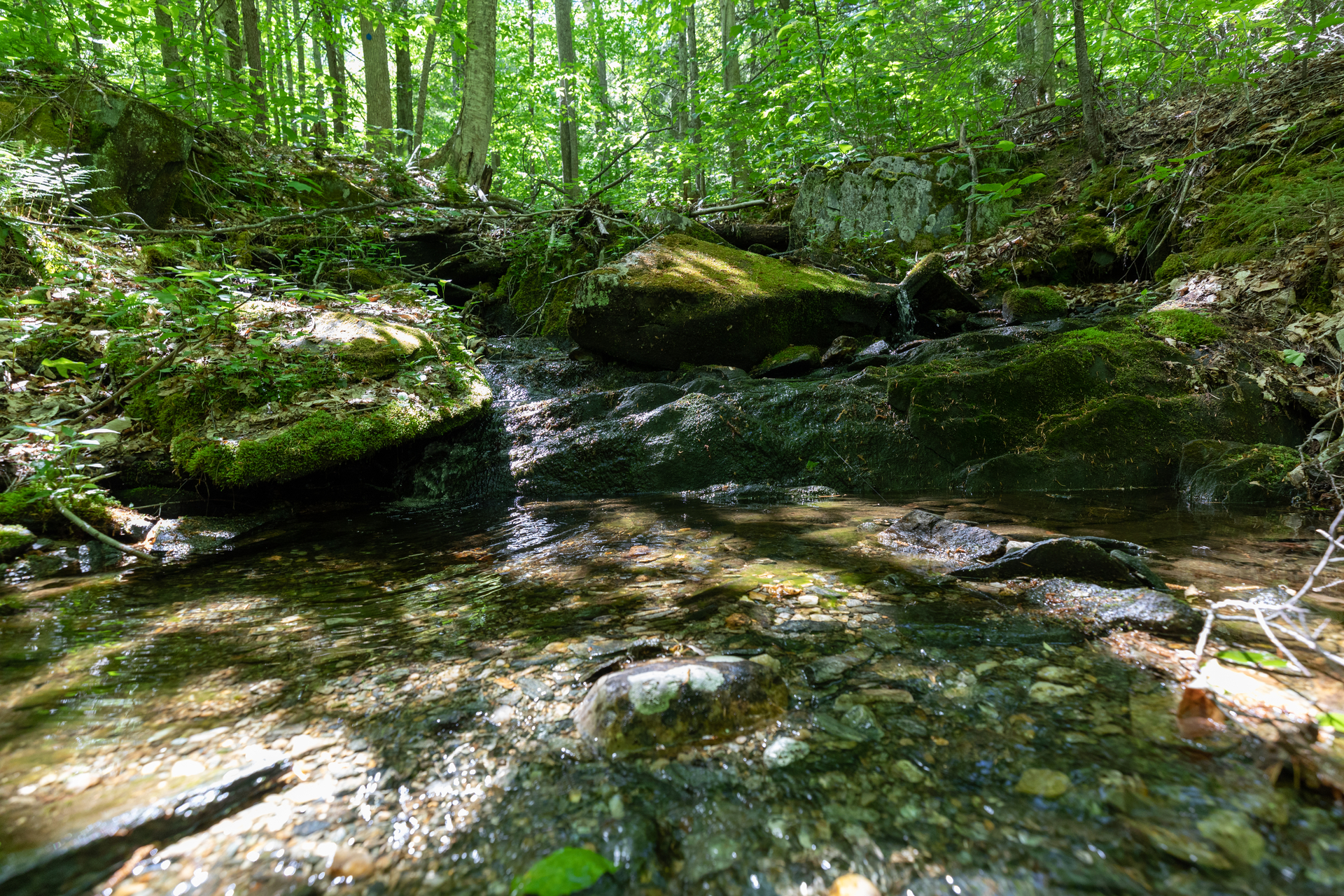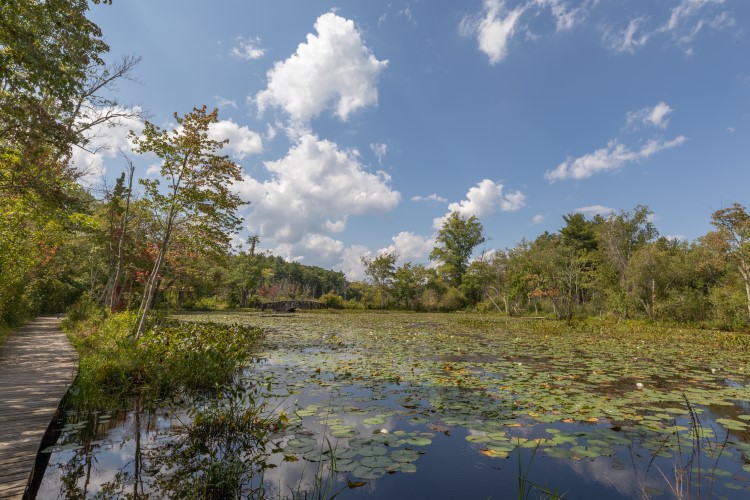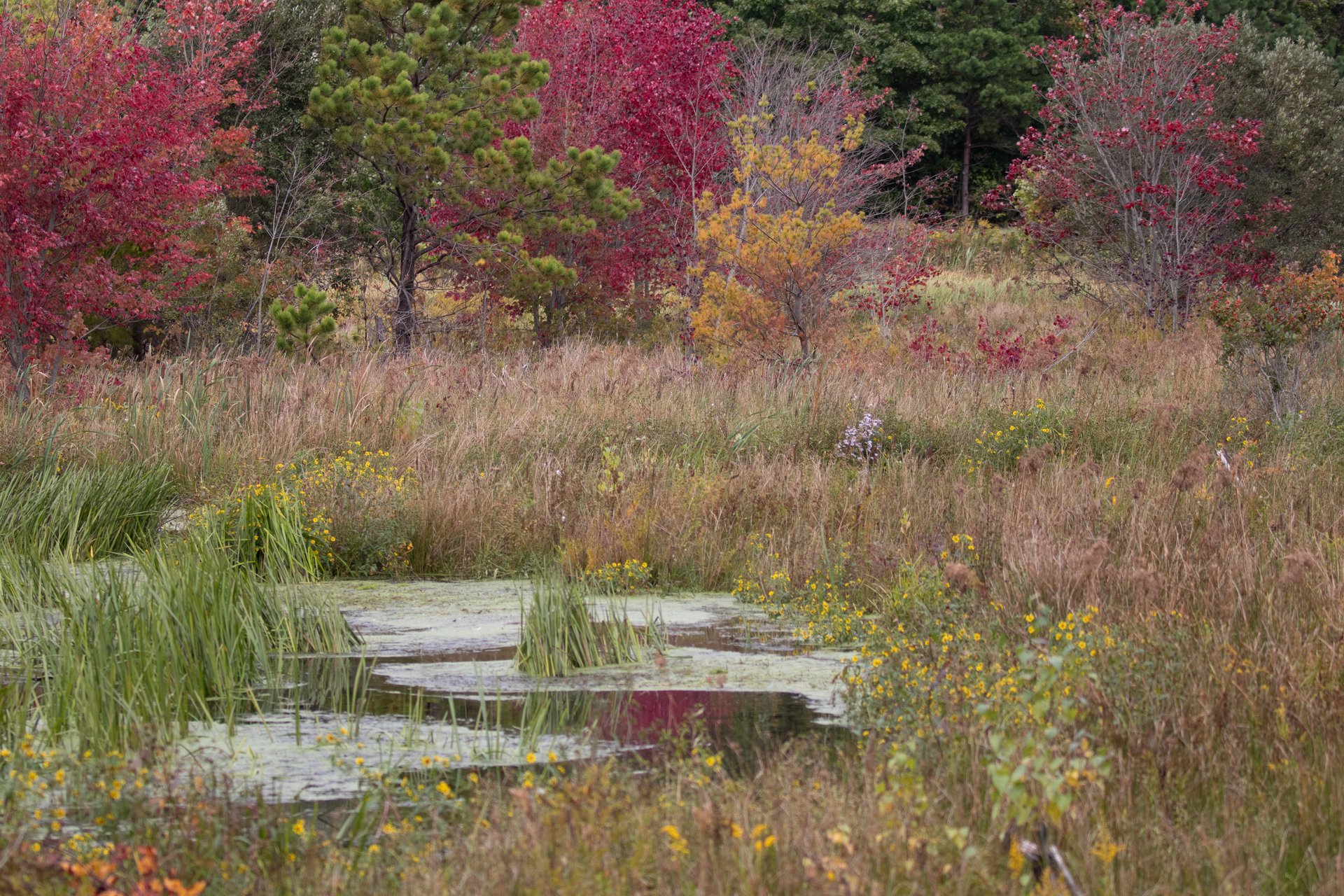Go With the Flow
April 01, 2022
For thousands of years, flowing water has carved through the New England landscape, creating waterfalls, brooks, streams, and rivers. Each spring, Massachusetts residents are given the unique opportunity to see these water features come to life across the state.
Snowmelt and Spring Showers
As winter comes to an end and temperatures begin to rise, snowfall and ice accumulated throughout the season begin to melt. From the tops of frosty Massachusetts peaks, as well as the stores of snow found in northern New England, melting snow travels downstream, guided by gravity and the path of least resistance, to replenish our watersheds.
In addition, spring typically brings an increase in rainfall, adding to the onrush of water and setting the stage for the explosion of life that’s on the way. Increased water flow causes waterfalls to rush, lakes to rise, and rivers to flow more quickly.
Changing Water Cycles
We are already seeing the impact of climate change on the spring renewal cycle. Each year, the nation’s average snowfall decreases by 0.19 percent, and many areas are beginning to see more rain than snow. With less accumulation of snow stored throughout the winter, flowing water systems don’t experience the annual spring rush from snowmelt, affecting the plants and animals that rely on the snowmelt to survive. Without rushing waters, fish are unable to spawn, wildflowers are unable to bloom, and predators are unable to hunt.
At the same time, an increase in rain instead of snow impacts soil health. Continuous rainstorms can cause too much rush, depleting the soil of its nutrients, causing erosion and runoff. Without healthy soil, farmers have a hard time growing sustainable crops for their communities. Now more than ever, nature-based climate solutions like habitat conservation, soil management in farming practices (see page 5), and erosion control are vital to the health of Massachusetts’ beautiful landscapes and the wildlife and people that inhabit them.
Where to Go
Across Mass Audubon’s network of wildlife sanctuaries, waterfalls, rivers, and lakes form the basis of habitats and ecosystems that support plant, animal, and human life. Here are a few of our sanctuaries to check out.
Laughing Brook, Hampden
Thornton W. Burgess, the beloved childhood author whose works included the rambunctious Peter Rabbit, drew inspiration for his stories from the wildlife near his home and the magical brook that, rushing over stone and sand, seems to be laughing along its way. Take the Mort and Helen Bates Trail 200 feet from the Teaching Station to the bridge to admire a lovely view of the brook. Continue to the East Brook Trail to travel alongside the brook and then loop back. More on Laughing Brook
Broadmoor, Natick
Located on Indian Brook and the Charles River, this sanctuary offers scenic views of waterfalls made by mill dams. Travel the Mill Pond/Marsh Trail to overlook streams, ponds, and a seasonal waterfall. Continue on the Boundary Trail to cross South Street and walk through white pines, then continue left or right at signpost 11 for a loop along the Charles River. To visit a vernal pool filled with snowmelt and spring rains, walk the Indian Brook Trail along the fields and into the woods to the viewing platform. More on Broadmoor
Cook’s Canyon, Barre
Galloway Brook, which flows over an old dam, creates an impressive waterfall and rapids during times of high water. Take the Cook’s Canyon Trail to the southeastern overlook site to get a glimpse of these rushing waters. More on Cook's Canyon
Rutland Brook, Petersham
Rutland Brook has one of the best flowing brooks in central Massachusetts. Take an easy walk on the Rutland Brook Loop and pass a mossy, rocky brook while walking through a forest of impressive white pines and hemlock. The brook flows from the beaver area, into Connors Pond and the East Branch of the Swift River, and eventually makes its way to Quabbin Reservoir. More on Rutland Brook
West Mountain, Plainfield
The waterfall at this sanctuary is situated within the watershed of the federally designated Wild & Scenic Westfield River, which provides valuable habitat for moose, black bears, otters, fishers, and bobcats, as well as a number of state-listed rare plants, animals, and nesting sites for threatened ground-nesting birds. Travel the East Slope Loop Trail to view the waterfall. More on West Mountain
Ipswich River, Topsfield
The Ipswich River, which runs through the wildlife sanctuary, was recently designated one of the nation’s most endangered rivers by American Rivers because of unnecessary water withdrawal that pumps it dry. Still one of the most beautiful waterways in Massachusetts, you can explore eight miles of the Ipswich River as it winds through the 1,955-acre property. Start at the Bunker Meadows Trail to cross the Ipswich River Trail, or continue on to South Esker Trail and Averill’s Island Trail to view more spots along the river. More on Ipswich River
Tidmarsh, Plymouth
Once a working cranberry farm, this landscape underwent the largest freshwater ecological restoration ever completed in the Northeast. Nearly three and a half miles of stream channels were reconstructed, connecting the headwaters of Beaver Dam Brook to the ocean for the first time in more than a century. Take the Farm Road Ramble Trail via the Entrance Trail and Meadow Trail to cross a bridge over the stream, where you may catch a glimpse of herring swimming upstream in April and May through what used to be cranberry bogs. More on Tidmarsh
More to Explore
The sanctuaries featured here are just a glimpse of the many opportunities awaiting you at Mass Audubon wildlife sanctuaries. Discover a special place with brooks, streams, and rivers by embarking on your own adventure.
Stay Connected
Don't miss a beat on all the ways you can get outdoors, celebrate nature, and get involved.



